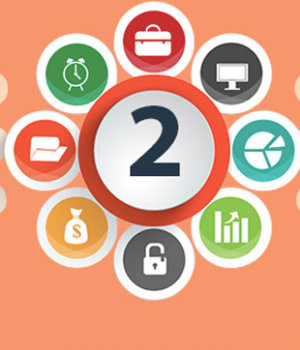Buyers and sellers have been transacting business in marketplaces since ancient Roman times. Today, buyers and sellers still come together but instead of the town square, they meet in digital spaces. And they meet all hours of the day, every day of the week. Digital marketplaces bring together multiple buyers and sellers with just one eCommerce platform.
Originally, these digital marketplaces focused on B2C buyers – eBay and Etsy are great examples of B2C marketplaces. But marketplaces aren’t just for B2C, B2B buyers enjoy the convenience of the marketplace too. According to Gartner research, by 2023 70% of transactions on enterprise marketplaces will be B2B – Alibaba and Amazon Business are just two examples. By then, medium to high-merchandise value digital merchants will have created their own marketplaces and an entirely new digital ecosystem.
Types of Marketplaces
If you can imagine it, there’s probably a marketplace for it. In the B2B space, you’ll find global marketplaces that offer a wide variety of products (Amazon); vertical marketplaces that serve a specific industry or niche by offering many similar products (Carenet for medical supplies); or horizontal marketplaces that serve up various products with similar characteristics (e.g. used apparel, like thredUp).
The Appeal of Marketplaces to Buyers and Sellers
So why this return to marketplaces? After years of experience roaming the wild internet, it turns out the order of the digital marketplace appeals not only to buyers but sellers as well.
Buyers
Buyers of all stripes love the versatility of marketplaces. Product researchers, purchasing agents, and procurement managers get their job done with a minimum of hassle. Most marketplaces employ a single onboarding process that streamlines purchasing from new vendors. Purchasing professionals also appreciate having a central digitized record of purchases and quotes for reporting purposes. Instead of foraging numerous websites, they can get most of everything they need in one location.
Sellers
Sellers find that marketplaces put them in front of markets they might miss or didn’t even know existed. This generates additional revenue from new streams. Marketplaces can enhance or replace other digital selling channels.
Marketplace Operators
Marketplace operators generate passive revenue without investing in warehousing or shipping costs. This is the real business benefit of marketplaces.
Gaining Business by Building a Marketplace
You don’t need to be in the marketplace business to benefit from building a B2B marketplace. Building a marketplace lets you improve the customer experience, create new and diversified revenue streams, and position your business for the future.
Improved customer experience
With a marketplace, you can create an entire ecosystem where technology vendors, financial service providers, complementary vendors, and even your competition come together in one space to provide an enhanced customer experience.
These expanded offerings can completely transform how your customers perceive your value chain. They’ll see your marketplace as the buying destination that can solve their problems and remove friction from the purchasing process. As a result, your marketplace will quickly become the first place they visit when they start their purchasing journey.
Create new, diversified revenue streams
Change the way you see your business. Instead of a walled garden with upstream suppliers and downstream customers imagine an entire ecosystem that is generating new revenue by serving the needs of third parties.
You benefit from diversified revenue streams generated by commissions, service fees, advertising, technical service offerings, logistics services, and even payment processing services. And many of these new sources of revenue won’t substantially increase your costs.
Additionally, a marketplace that includes your own goods and services may help you identify new niches and markets that you weren’t aware of. You may even expand your brand offerings to generate new revenue streams.
With a B2B marketplace, you can even leverage existing suppliers and produce a new profit by simply assisting them in increasing their sales. If you include competitors in your marketplace, you’ll even produce revenue each time they make a sale. By simplifying the buying and selling process, you’ll profit from the business activities of others.
Prepare for the future
This is all about looking beyond your current linear selling relationships and leveraging the power of partnerships.
By 2023, 70% of enterprise marketplaces will focus on B2B transactions. These enterprise marketplaces will offer their own products in addition to bringing buyers and sellers together. This is the new wave in digital selling. Now is the time to prepare.
As businesses look for ways to streamline the buying process and control procurement costs, they’ll increasingly turn to marketplaces to help them achieve their goals.
Look at your business through the lens of the marketplace, and you’ll see the future ripe with new opportunities. As a manufacturer, can you help OEMs get digital quotes in minutes instead of months? As a government contract supplier, can you help other governmental agencies and contractors maintain compliance? Can you enrich your offerings by bringing on complementary product portfolios?
These are all ways marketplaces can position your company for the future.
How B2B Marketplaces and B2C Marketplaces are Different
Marketplaces are great for both B2B and B2C. And while B2B and B2C buyers have similar expectations for their buying experience they have very different needs. B2B transactions tend to be more complex and involve more players.
On a stand-alone website or in a marketplace, a B2C buyer sees something and makes the decision to buy – usually on impulse. They don’t need to coordinate with other parties or get permission from another person. They see it and they buy it. And they may never buy it again.
A B2B buyer isn’t buying on impulse, generally does quite a bit of research before the purchase, and will most likely purchase the same items over and over again. They may also need to coordinate with other departments or teams and may need to get multiple levels of approval.
Because B2B marketplace needs are different, they must be supported by a B2B eCommerce platform that simplifies complexities. This means they must have the functionality to:
- Accept purchase orders
- Handle bulk orders
- Provide quote and contract negotiation workflows
- Personalize pricing and products for each customer
- Process common B2B payment terms such as 30-day net and financing
Ready to Explore the Marketplace?
If you see a B2B wholesale marketplace as a way to grow your business, Gartner recommends you:
Begin by identifying the specific business benefits you want to target. This could be improving efficiency, growing the business, or improving the customer experience.
Then develop your strategy to create your marketplace. Will you do this through new capabilities, new services, and new partners?
Next, source the right launch partners, define the revenue model, identify the operational processes, and obtain the technical tools necessary. And speaking of technology, make sure you understand the technology resources called for by roadmap and plan accordingly.
Finally, get ready to blast into the future! Support your launch with education and training for both your business partners and customers.
If you like the article then follow Technoroll on social medial
Editorial Staff of the TechnoRoll, are a bunch of Tech Writers, who are writing on the trending topics related to technology news and gadgets reviews.



